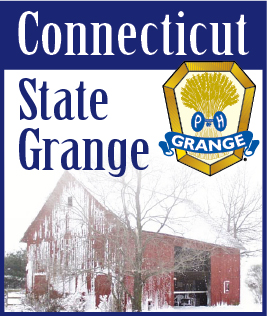| OCTOBER 13, 2010 -- Dairy farmers are lamenting reductions in a state government aid program and calling for changes in federal milk pricing as a study shows that agriculture remains an important sector of Connecticut’s economy.
The state has delivered on only one-third of funding promised last year amid a financial crisis at Connecticut’s dairy farms, said Steven Reviczky, executive director of the Connecticut Farm Bureau Association, an industry trade group. Gov. M. Jodi Rell and the General Assembly took money from the Community Investment Act, eliminating one quarterly payment and “severely” reducing scheduled payments for the entire fiscal year, he said.
Rell signed the bill instituting the two-year payment program in July 2009.
“So while it was great that the state passed this legislation, the reality is the safety net is not living up to its legislative intent,” said Reviczky, an Ashford native.
The governor’s office didn’t release details of the financial changes but said the governor remains committed to helping farmers during her final three months in office.
The program enacted last year did help prevent a wave of local farm foreclosures. Connecticut lost just two farms in the past year, while New York and Vermont, which did not enact similar programs, lost 96 and 70, respectively, Reviczky said. Connecticut has about 150 dairy farms, down from about 500 in 1990.
Flexibility needed
The Connecticut dairy industry is still looking for changes in the way the U.S. government calculates wholesale milk prices. Flexibility is needed to account for the regional differences in the cost of production, said Peter Orr, owner of Fort Hill Farms in Thompson. Special consideration should be given to the “significant” land that Connecticut dairy farms keep in production, he said.
Current federal formulas resulted in Connecticut farmers losing an average of $1 on every gallon of milk produced. This combined with the recession pushed some farms to close while others went deep into debt.
The U.S. government enacted a $350 million national aid program for dairy farmers about a year ago. U.S. Rep. Joe Courtney, D-2nd District, founder and co-chairman of the Congressional Dairy Farmers Caucus, supported the legislation.
Changes in milk pricing will strengthen farms’ role in protecting open space and maintaining hunting areas, wetlands and water resources, Orr said.
Farms ‘lost forever’
“Every farm that goes out of business is fair game for development and that’s what scares me,” he said. “The longer we wait, the more farms that will fail, and once a farm is converted it’s pretty much lost forever.”
Fort Hill is part of The Farmer’s Cow LLC cooperative that includes dairy operations in Franklin, Lebanon, Hebron and Woodstock. The Farmer’s Cow has been adding new products, including an ice cream line that debuted this summer, but the producers are still struggling, they say.
The University of Connecticut, in a recently released study, put the value of the state’s agricultural sector at $3.5 billion, higher than the $2 billion often cited in state capitol policy discussions. The sector provides employment for 20,000 people and has wide impact, said the study, which is based on 2007 statistics.
Cascade effect
“Because the agricultural industry purchases goods and services from other industries and hires local labor, its economic impact cascades throughout the state’s economy,” said the study, produced by UConn’s Department of Agricultural and Resource Economics.
Agriculture’s total impact in New London and Windham counties was put at $290 million for each of the counties, the study said. New Haven is the county with the largest impact from agriculture, at $897 million.
The tourism industry benefits from agriculture, the UConn researchers, headed by Professor Rigoberto Lopez, said.
“With destinations such as wineries, pick-your-own orchards, pumpkin patches and corn mazes helping to attract tourists,” Lopez said. “Farmers markets, farm stands and farm-to-table events can boost sales for area business.” |
